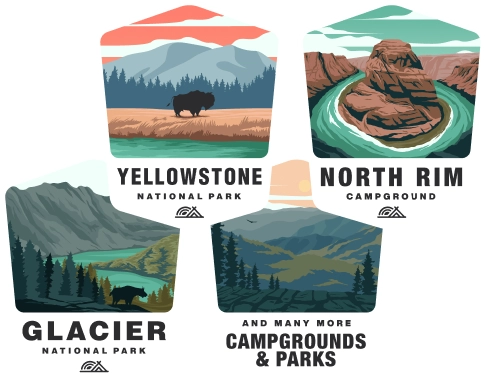Camping at Carson National Forest
Overview of Carson National Forest
Carson National Forest is a breathtaking natural area located in northern New Mexico encompassing over 1.5 million acres. The forest features high peaks, deep canyons, wildflower-filled meadows, and aspen groves, providing a stunning backdrop for a variety of outdoor activities. Camping is a popular way to enjoy the forest's natural beauty and serenity.
Camping Opportunities
Carson National Forest offers a range of camping experiences, from developed campgrounds to backcountry and dispersed camping for those who prefer a more rustic and remote experience.
- Developed Campgrounds: The forest has numerous developed campgrounds equipped with amenities such as picnic tables, fire rings, toilets, and potable water. Some popular campgrounds include El Rito, Field Tract, Canjilon Lakes, and Hopewell Lake, among others. Reservations for certain campgrounds can be made through the Recreation.gov website, while others are available on a first-come, first-served basis.
- Dispersed Camping: For a more secluded camping experience, the forest allows dispersed camping, which is primitive camping in undesignated areas. When dispersed camping, it's important to follow Leave No Trace principles and keep a safe distance from water sources to prevent contamination.
Camping Regulations
- Stay Limits: Generally, campers are allowed to stay up to 14 consecutive days at one location in the forest. After that, they must relocate at least 25 miles away from the original campsite.
- Campfires: Due to the risk of forest fires, there are strict regulations regarding campfires. Always check current fire restrictions before lighting a campfire. Use existing fire rings where available, and never leave a fire unattended. Make sure the fire is completely extinguished before leaving.
- Permits: No permits are required for camping in most of Carson National Forest. However, special areas may require a permit, so it's best to check with the local Ranger District.
- Bear Safety: Bears inhabit the Carson National Forest, so it's important to practice bear safety. Store food and scented items securely and be mindful of your surroundings.
Seasonal Considerations
- Best Time to Visit: The best time to camp in Carson National Forest is from May to September when most campgrounds are open and the weather is milder. However, the high elevation can cause temperatures to drop significantly at night, even during summer months.
- Winter Camping: Some areas of the forest are accessible for winter camping and activities like snowshoeing and cross-country skiing. Campers should be prepared for cold temperatures and snow.
Safety and Preparation
- Weather Conditions: Always check the current weather conditions before heading out. Afternoon thunderstorms are common in the summer, and snow can occur during the winter months.
- Wildlife Encounters: The forest is home to wildlife, including elk, deer, and mountain lions. Be aware of your surroundings and know what to do in the event of a wildlife encounter.
- Altitude Sickness: With some areas exceeding 10,000 feet in elevation, altitude sickness is a concern. Acclimate slowly to higher elevations, stay hydrated, and rest as needed.
Amenities and Accessibility
While many campgrounds offer basic amenities, visitors should be prepared to be self-sufficient, especially when dispersed camping. Accessibility varies by campground, with some sites offering facilities for visitors with disabilities.
Leave No Trace
When camping in Carson National Forest, or any natural area, always adhere to Leave No Trace principles to minimize your impact on the environment. This includes packing out all trash, respecting wildlife, and leaving what you find.
Conclusion and Additional Resources
Camping in Carson National Forest can be a rewarding experience, offering a chance to connect with nature and enjoy the stunning landscapes of New Mexico. For more information and the latest updates on regulations and conditions, contact the nearest Forest Service office or visit the Carson National Forest website before planning your camping trip.

